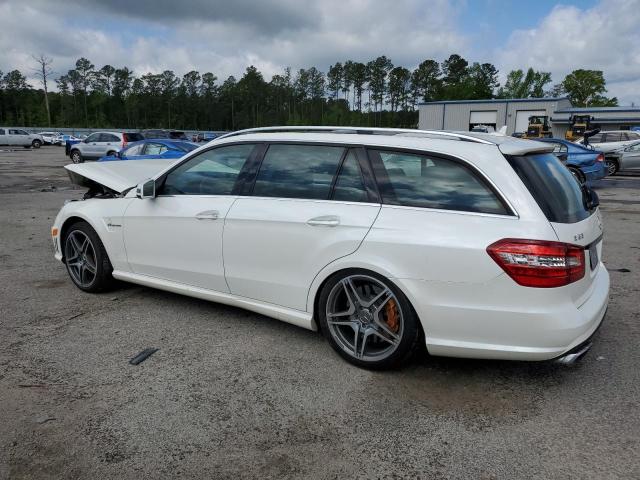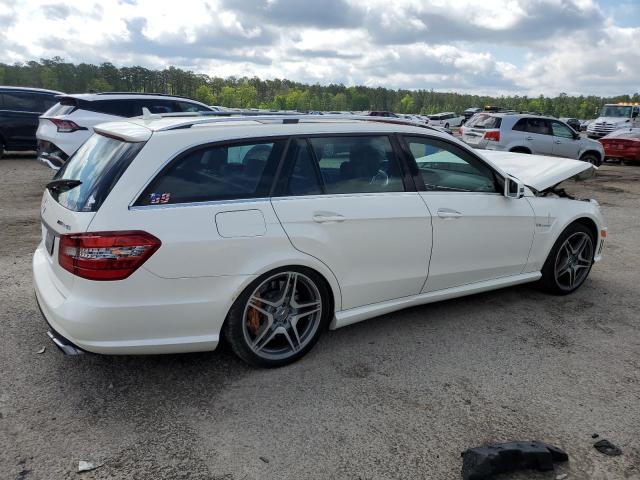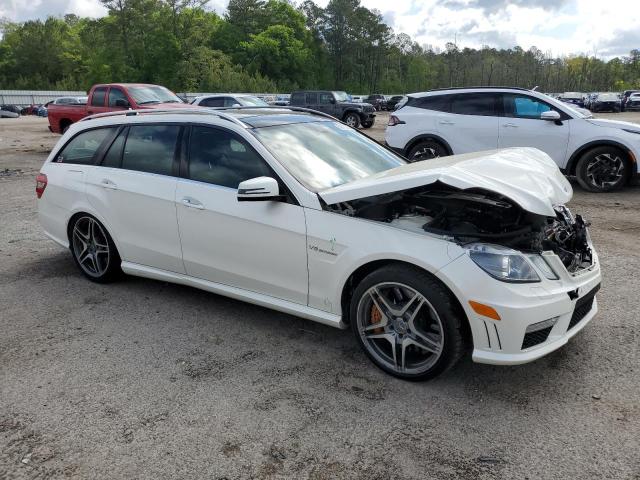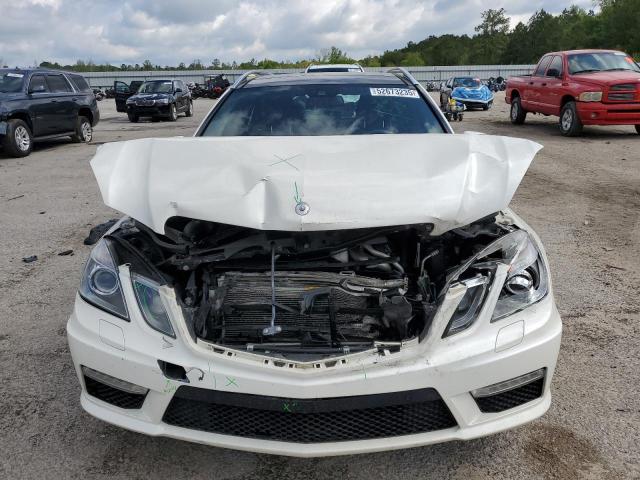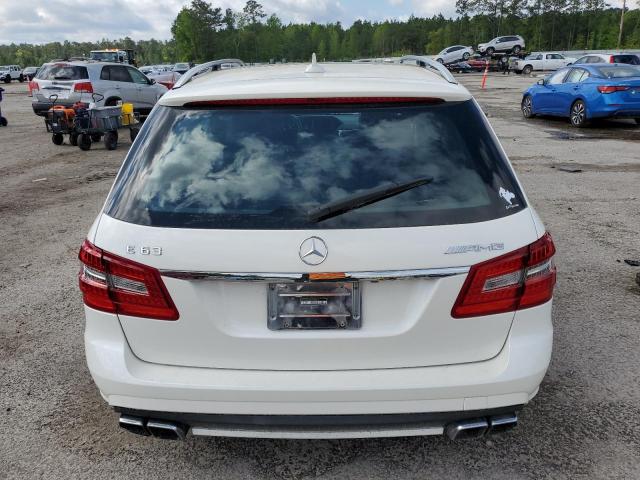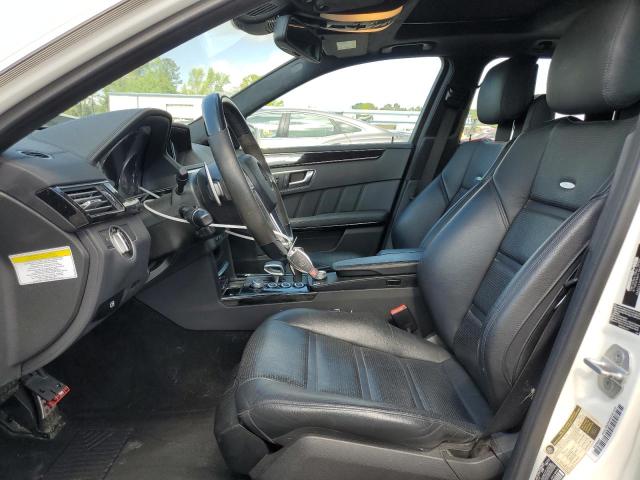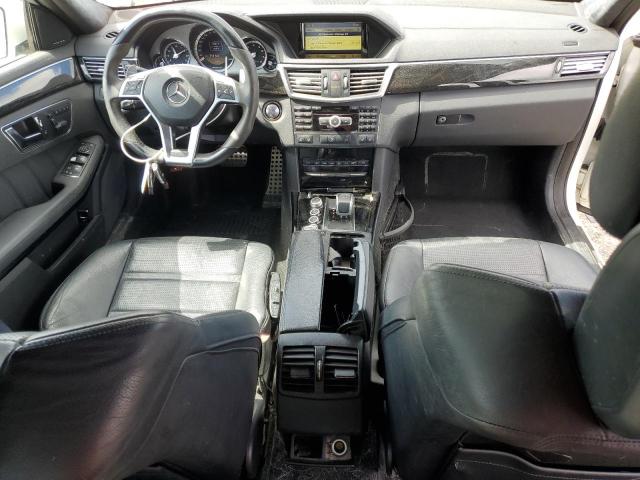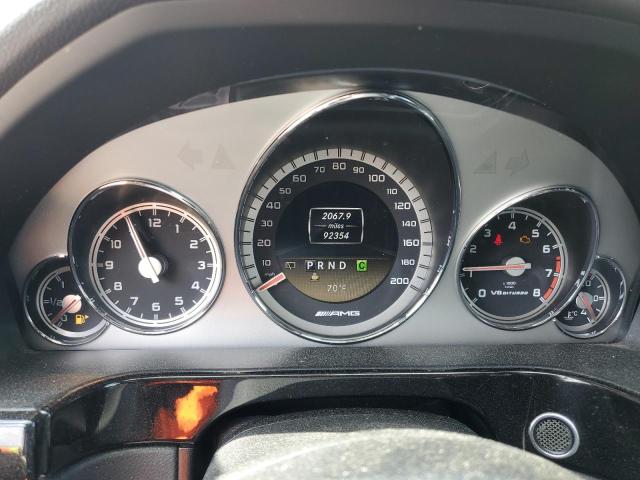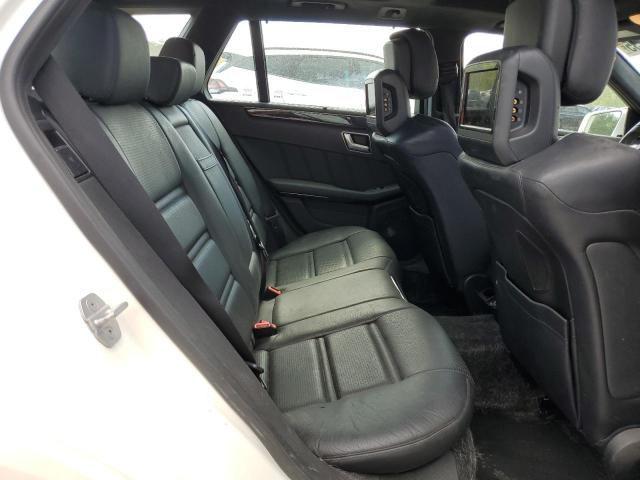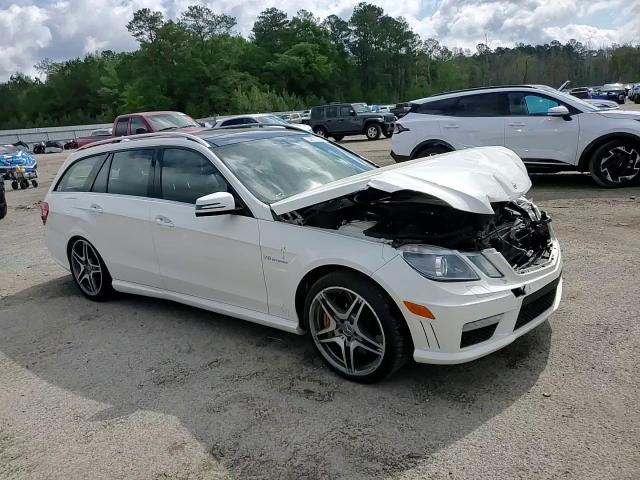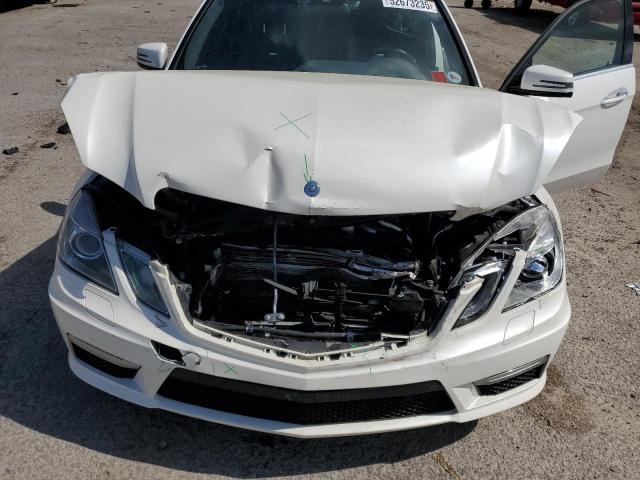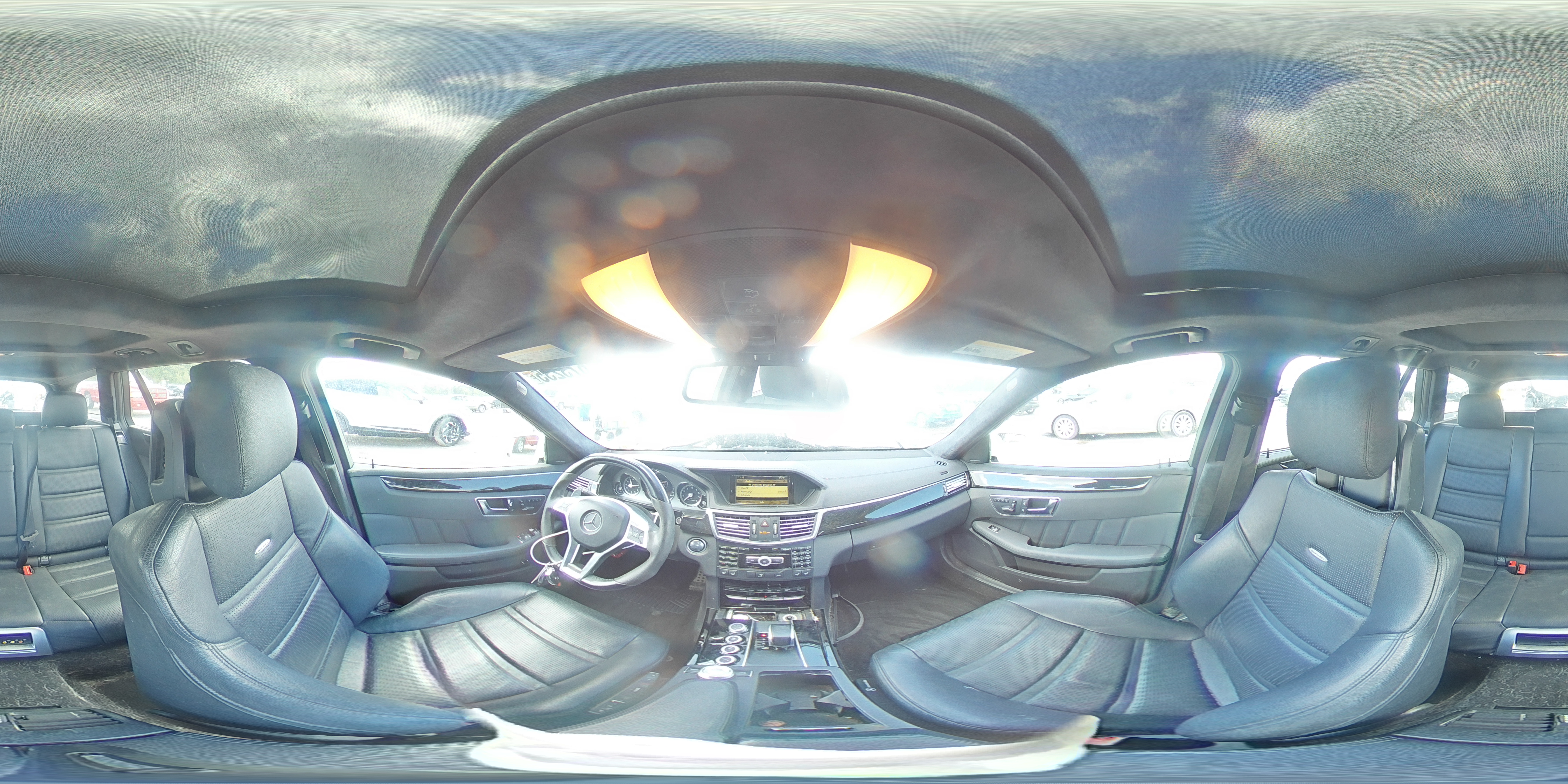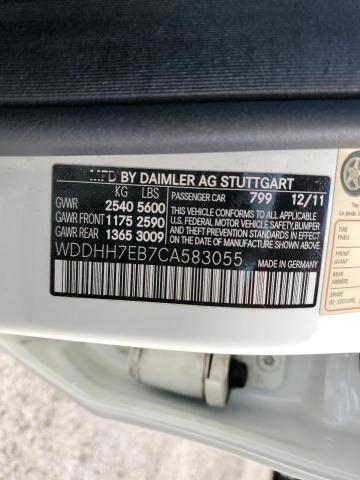2012 MERCEDES-BENZ E-CLASS | WDDHH7EB7CA583055
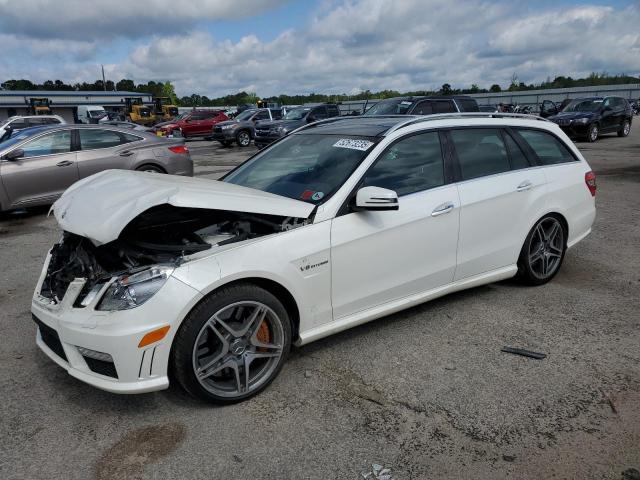 ❯
❯Lot details
- Sale Date09/Jun/2025
- Lot Number52673235
- Location
- Odometer92,354 miles (148,629 km)
- Primary Damage:FRONT END
Vehicle specifications
8
~$104,000
Engine: 5.5L Twin-Turbocharged V8
Torque: 800 Nm
0–100 km/h: ~3.6 s
The Mercedes-Benz E 63 AMG S (W212) was a masterpiece of subtle violence — a business sedan with the heart of a supercar. With 585 hp and 800 Nm from its 5.5L twin-turbo V8, the E 63 S rocketed to 100 km/h in just 3.6 seconds, making it faster than many Ferraris of its day, while comfortably seating five adults and hauling groceries.
The shift to 4MATIC AWD transformed the car’s personality: it gained massive traction and all-weather capability while preserving AMG’s sharp handling. The AMG Ride Control suspension, limited-slip rear differential, and S-tuned chassis gave the E-Class unheard-of agility for a near-2-ton executive car.
Inside, the E 63 retained full Mercedes luxury: Nappa leather, carbon/aluminum trim, massage seats, and the Command infotainment system. It was quiet when needed, thunderous in Sport+, and always brutally quick.
The M157 V8 was a gem — with a deep, menacing exhaust note, near-instant throttle response, and huge tuning potential. And while the E 63 S was civilized at a cruise, it could instantly become a feral brute, delivering tire-shredding torque and addictive acceleration.
The E 63 AMG S (W212) earns its place in the performance registry as one of the greatest all-around performance sedans of the 2010s — discreet, luxurious, and explosively powerful — a true German muscle car in a tailored suit.
Final Bid Mercedes-Benz E-Class (2012)
$14,100
$14,100
$14,100
Body Styles
AMG versions of the W212 were available in sedan and wagon (T-Modell) configurations. Early models (2009–2013) kept the sharp quad-headlamp look, while facelifted versions (2013–2016) adopted single-piece LED headlights, a prominent twin-blade grille, and more aggressive bumpers with enlarged intakes.
AMG-specific features included quad exhaust tips, widened front fenders, sportier skirts, and a blacked-out grille with “A-wing” styling post-facelift. The wagon version (especially in S trim) became a cult favorite due to its absurd power combined with family usability and stealth.
Model Name Meaning (Manufacturer)
“E-Class” designates the executive midsize line. “63 AMG” was originally tied to the 6.2L V8 (M156), despite the badge suggesting 6.3L. Even after switching to the smaller twin-turbo V8 (M157), Mercedes retained the "63" naming for brand recognition.
The “S” suffix introduced with the 2013 facelift denoted the highest performance tier, featuring full 585 hp, 4MATIC all-wheel drive, and dynamic engine mounts — making it the fastest E-Class ever at the time.
Body & Interior Colors and Rims
The W212-generation Mercedes-Benz E-Class, produced from 2009 to 2016, balanced classic executive elegance with modern engineering, and its wide array of exterior paints, interior materials, and wheel options reflected this harmony. Designed to cater to both conservative luxury buyers and those seeking sportier, AMG-influenced styling, the E-Class in this era offered a highly customizable aesthetic experience across Sedan, Estate, Coupe, and Cabriolet variants.
The exterior color palette featured a mix of timeless Mercedes tones and bolder metallics. Popular solid options included Polar White and Black, ideal for traditional luxury aesthetics. Metallic choices like Iridium Silver, Palladium Silver, and Obsidian Black were widely favored for their depth and sophistication, while Tenorite Grey, Diamond Silver, and Dolomite Brown offered subtle individuality. For buyers seeking richer hues, Cavansite Blue, Indium Grey, and Cuprite Brown added a premium, upscale presence. Special colors such as Designo Diamond White Bright or Designo Mocha Black became available for higher trims and AMG versions, adding satin or pearlescent finishes with exclusive depth and polish.
Inside, the W212 E-Class offered a spectrum of materials and color combinations that ranged from understated business-class elegance to expressive luxury. Standard trims came with MB-Tex synthetic leather or optional Artico leather, with colors like Black, Almond Beige, and Ash Grey dominating early models. Higher trims and special editions introduced rich Nappa leather, two-tone interiors, and elegant finishes such as Chestnut Brown, Porcelain, or Espresso Brown. Dashboard and door inlays included wood veneers like Burl Walnut, Black Ash, and Brown Eucalyptus, or more modern alternatives like brushed aluminum and piano black lacquer — with AMG models often incorporating carbon fiber trim. Lighting accents, contrast stitching, and upgraded switchgear were refined in the 2013 facelift, enhancing perceived quality and modernity.
Wheel options were just as diverse, ranging from classic multi-spoke alloys to aggressive AMG designs. Entry-level models typically featured 16- or 17-inch alloy wheels with simple Y- or V-spoke designs in silver or grey finishes. Avantgarde and Sport packages introduced 18-inch twin-spoke or 5-spoke designs, often with a machine-finished face and dark grey inner accents. AMG models and appearance packages offered 18- and 19-inch AMG wheels with sculpted multi-spoke or turbine-inspired patterns, wrapped in performance tires to match the dynamic character. Cabriolets and Coupes frequently featured staggered-width wheels, enhancing the wide, athletic stance. Optional AMG Night Packages could include gloss black wheels to contrast lighter body colors for a sharper, more aggressive visual effect.
Top Expensive Options
- AMG Performance Package (for early models): ~$6,000
- 4MATIC Drivetrain (standard on S): ~$2,500
- Carbon Ceramic Brakes: ~$11,000
- AMG Night Package (black trim, dark glass): ~$2,200
- Designo Exclusive Interior: ~$5,500
- AMG Performance Seats (with Alcantara): ~$3,000
- AMG Exterior Carbon Package: ~$5,000
- Bang & Olufsen Surround Sound System: ~$6,300
- Driving Assistance Package (Distronic, lane keep): ~$3,000
- Panorama Glass Roof (sedan): ~$1,500
vs Competitors
The E 63 AMG competed directly with the BMW M5 (F10), Audi RS6 (C7), and Cadillac CTS-V (LSA/LT4). The naturally aspirated M156 version offered linear power delivery and raw sound, while the twin-turbo M157 variants delivered brutal low-end torque and superior real-world performance.
The RS6 was only available as a wagon and came with AWD, making it a more practical yet tech-heavy rival. The F10 M5 had higher top-end power but lacked the theater and sound of the AMG. The E 63 AMG S 4MATIC was the most balanced, offering luxury, all-weather usability, and supercar acceleration, especially in wagon form.
Fun Fact
The E 63 AMG S Estate (Wagon) was, at the time, the fastest-accelerating station wagon in the world, beating many sports cars with a 0–100 km/h sprint in just 3.6 seconds. Despite its performance, it offered up to 1,950 liters of cargo space, optional dog guard nets, and folding rear seats — earning it cult status among enthusiasts who needed speed and practicality. Even more unique: it was hand-assembled in Affalterbach, just like AMG GT models.


